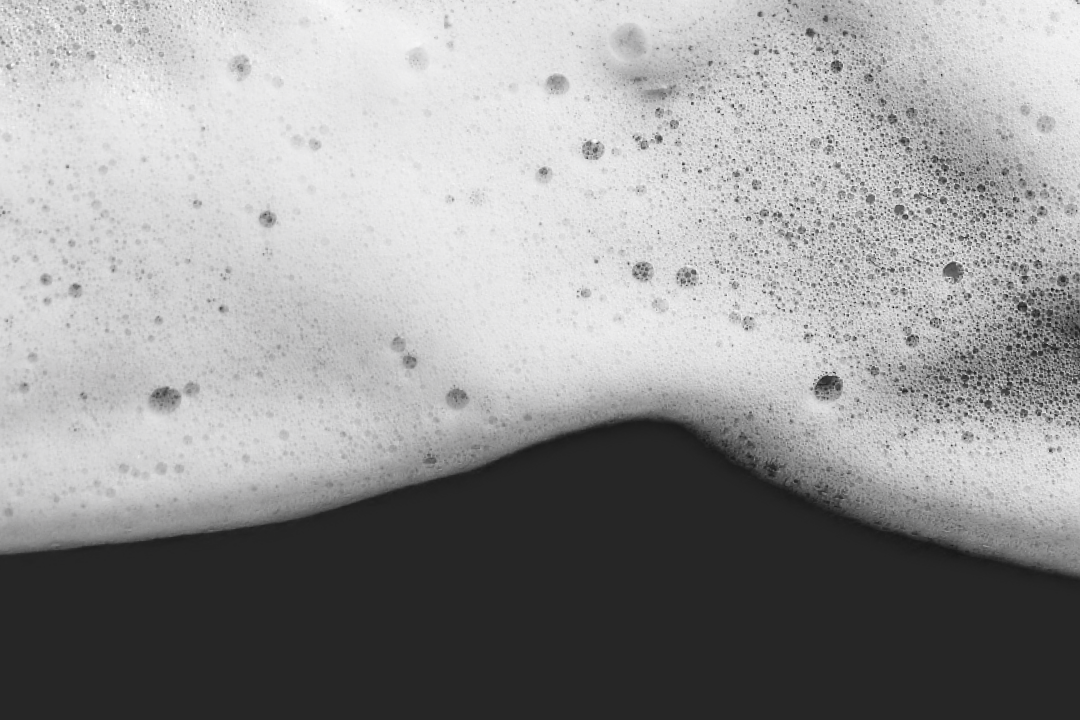Why Is Fluoride in Toothpaste in the First Place?
If you’re familiar with fluoride, it is likely because your dentist has been telling you all about it for as long as you can remember.
Fluoride is considered a key component in dental health and has been incorporated into our dental care routines for the past 70 years.
But why is fluoride in toothpaste anyway, and are there other alternatives for those who prefer a toothpaste that is fluoride-free? Read on to become a fluoride expert with Bite!
What Is Fluoride?
Fluoride is a mineral within Earth’s crust that can enter the air, soil, and water. While we are exposed to fluoride naturally, those trace amounts are typically not enough to provide any measurable effect on us — or our teeth.
However, some bodies of water contain naturally high concentrations of fluoride, and in the mid-1900s, scientists found that in areas where the drinking water contained ample amounts of fluoride, community members had very strong teeth enamel and low rates of tooth decay.
Throughout the 1940s, researchers conducted many studies to help determine the right amount of fluoride for our water sources to reduce tooth decay without causing any form of health consequence. Today, many areas have safe amounts of fluoride added to their tap water because of the dental benefits.
What Are the Benefits of Fluoride in Toothpaste?
Now that we all have a better understanding of where fluoride came from and why it is so popular today, let’s talk about some of the main benefits you can enjoy from fluoride-containing toothpaste.
Cavity Prevention
Cavities are craters that can form on the surface of the teeth, and they are also known as dental decay or caries. Cavities tend to occur when the tooth enamel becomes compromised due to bacteria and plaque buildup.
When sugars and starches, like the ones in candy bars, white bread, and packaged snacks, remain on the teeth for prolonged periods of time, bacteria in the mouth can use those sugars to form acids. These acids, over time, lead to plaque, which can then harden into tartar. While plaque can be removed with good oral hygiene habits, tartar is more difficult to remove and generally calls for a trip to the dentist.
As the acids in plaque erode minerals in the tooth’s enamel, holes in the enamel can form, allowing any bacteria to move deeper into the tooth. This can lead to cavities and tooth decay, and if a cavity becomes deep enough, you may end up experiencing pain and sensitivity in the affected tooth or teeth.
The good news is that you don’t technically have to give up all of your favorite sweets and treats. If you maintain proper oral hygiene habits and make sure to brush your teeth after eating lots of sugars or starches, you can help prevent cavity-causing bacteria and acid.
More specifically, incorporating fluoride into your oral care routine can help prevent cavities — and it may even be able to reverse early stages of plaque buildup.
According to the Centers for Disease Control and Prevention (CDC), tooth decay dropped by over 60% among 12-year-olds between the 1960s and 1990s, during the time that fluoride became widely available in both drinking water and toothpaste.
Enamel Strength
Enamel, which is the translucent outer layer on each tooth, works to protect the sensitive inner layers of the teeth.
Enamel erosion can occur after acidic plaque buildup or even as a result of friction and abrasion from teeth clenching or grinding, brushing your teeth too hard, or using a toothbrush with stiff or tough bristles.
If your enamel becomes damaged or weakened, your teeth can become more cavity-prone. You may also notice discoloration and sensitivity in teeth with weak enamel.
Dental products containing fluoride can help strengthen your enamel, warding off cavities while also reducing some of the discomfort associated with enamel erosion.
Protection From Bacteria
Fluoride can help reduce the harm caused by bacteria by decreasing the acid tolerance of bacteria commonly found in the mouth. By interfering with the bacteria’s ability to produce acid that breaks down tooth enamel, fluoride can help limit or prevent tooth decay and improve the health of our teeth.
Mineralization
Our tooth enamel contains a number of minerals like phosphate and calcium. When bacteria produce acid, it can eat away at these minerals, which is a process known as demineralization.
Demineralization can cause problems like tooth decay if it happens too quickly — more specifically, if it occurs at a faster rate than remineralization, a process in which lost minerals are replaced and replenished.
Fluoride helps slow the loss of minerals from enamel and can support remineralization by building a compound called fluorapatite. The formation of fluorapatite can help strengthen enamel by reintroducing vital minerals and boosting resistance to mineral loss.
How Often Should I Use Fluoride Toothpaste?
According to recommendations from the American Dental Association, you should brush your teeth twice a day if using fluoride toothpaste. This helps ensure you are getting the maximum benefits out of the fluoride in your toothpaste.
Do I Need To Use Fluoride Every Time I Brush?
While fluoride in toothpaste does have a number of benefits, not everyone needs to use fluoride every time they brush their teeth.
Many of us already get ample fluoride exposure from our food and water supply. Currently, 73% of Americans use drinking water that has gone through water fluoridation, and the CDC has a tool to see if your water source is fluoridated.
Since fluoridated water can also reduce the risk of tooth decay, you may prefer a fluoride-free toothpaste if you feel you get enough fluoride from your drinking water–especially if you are sensitive to fluoride.
Does Fluoride Have Any Side Effects?
Fluoride is considered largely safe for most people, with most side effects only occurring if large amounts are ingested — much more than you’d find in the pea-sized amount of toothpaste you spit out or in any fluoridated water system, which undergoes testing and adjustments to ensure safe and optimal fluoride levels.
The main risk associated with consuming too much fluoride is dental fluorosis, which results in white spots forming on the teeth. This most often occurs in children whose teeth are still forming.
For this reason, fluoride toothpaste isn’t recommended for children under the age of three, and older children should be supervised if using fluoride toothpaste to make sure they don’t swallow the toothpaste after use.
Potential Allergies
While fluoride is largely safe and beneficial, there are cases of fluoride sensitivities and allergies. Serious allergies to fluoride are extremely rare, but if you are sensitive to this mineral, finding a cavity-fighting alternative can help keep your mouth feeling its best.
What Other Ingredients Are in Toothpaste?
Along with an ingredient to reduce cavities and strengthen enamel, most toothpaste includes the following:
- An abrasive such as calcium carbonate to help polish and remove food from the teeth
- A binder to help keep the toothpaste together. At Bite, we use natural, legume-derived guar gum.
- A foaming agent such as sodium cocoyl glutamate or SLS to help get a deeper clean between the teeth.
Does All Toothpaste Contain Fluoride?
While many toothpastes contain fluoride, there are also several fluoride alternatives available.
At Bite, our fluoride-free toothpaste relies on nano-hydroxyapatite (nHAP) to support enamel remineralization, along with erythritol and xylitol to help prevent and repel bacteria.
NHAP is the star ingredient in our fluoride-free toothpaste, and it can safely and effectively replenish enamel, strengthen teeth, soothe sensitivity, and prevent cavities.
Xylitol and erythritol are plant-based sweeteners with antibacterial benefits. When used in toothpaste, these natural ingredients can help repel cavity-causing bacteria in the mouth while also adding a fresh flavor.
Is Fluoride-Free Toothpaste Bad?
Fluoride-free toothpaste can provide an effective, enamel-protecting alternative for those who are sensitive or allergic to fluoride, young children, or those who have high levels of fluoride in their public water supplies.
NHAP toothpaste can also provide added benefits for anyone with sensitive teeth.
What Happens If I Never Use Fluoride?
The use of fluoride has been proven to significantly lower the risk of tooth decay. You may be at a higher risk for cavities and tooth decay if your drinking water does not contain fluoride and you do not use fluoride toothpaste.
However, incorporating proven fluoride alternatives such as nHAP into your oral health routine means you can still take great care of your pearly whites, no fluoride needed.
What Else Can I Do To Keep My Teeth Strong?
Along with brushing your teeth two times a day with an effective cavity-fighting toothpaste, using a natural mouthwash and flossing can further strengthen your teeth. Mouth rinses can help ward off bacteria in harder-to-reach parts of the mouth, while floss can help stimulate the gums and remove food bits to prevent plaque buildup.
The Bottom Line
Fluoride was first added to toothpaste over 70 years ago to help reduce tooth decay and prevent cavities, and it has become a standard ingredient in oral care products.
However, for those who prefer a fluoride-free option, ingredients like nHAP can combat cavities and keep your mouth fresh.
Because we believe you know your body best, we are excited to offer both fluoride and fluoride-free Toothpaste Bits.
With either option, you are getting nothing but clean, gentle, and vegan ingredients free of any harsh sulfates or parabens — delivered straight to your door in a reusable glass jar with 100% plastic-free packaging and carbon neutral shipping.
A win for your teeth and a win for the planet!
Sources
Antimicrobial actions of fluoride for oral bacteria | Canadian Journal of Microbiology


